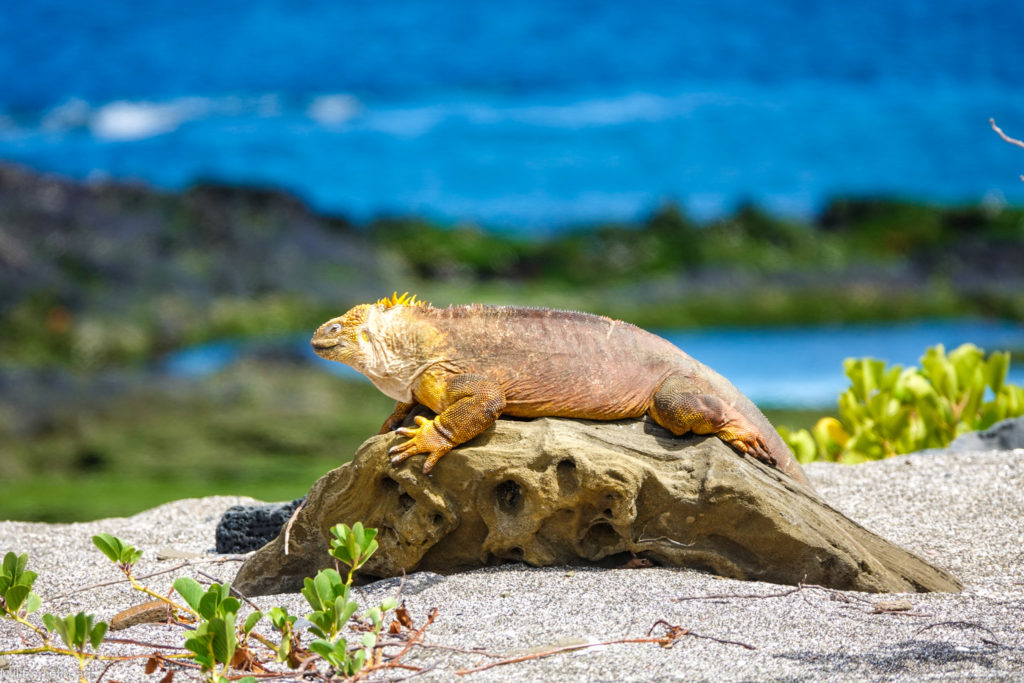
Combining a diverse array of wildlife with a colorful palette of landscapes, Santiago Island and Rábida Island are two small, unpopulated islands that are close enough to visit on the same day, making for an unforgettable overall experience.
Formed by two overlapping volcanoes, Santiago Island was the second island visited by Charles Darwin and the island where he stayed the longest.
With its fascinating wildlife and steep black, rocky cliffs along the coastline, this island undoubtedly warrants a visit by travelers today.
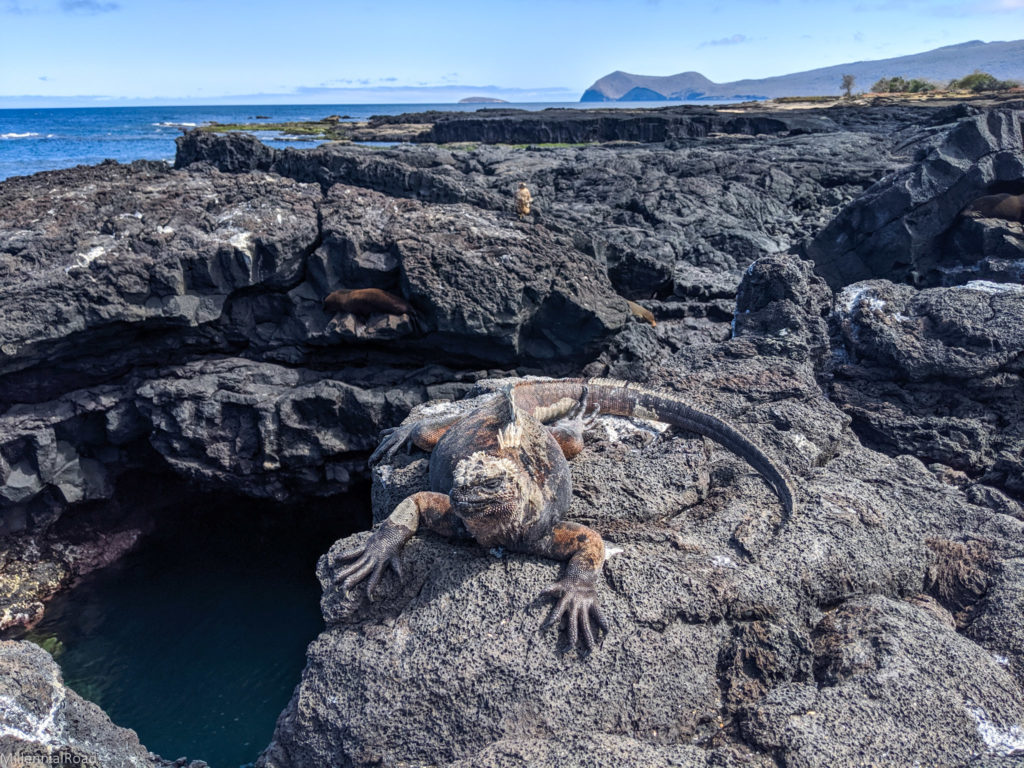
A short distance south of Santiago Island, Rábida Island touts a distinctive red hue and relatively unique appearance as a result of the high concentration of iron in the lava that formed the island.
This small, barren island is dominated by a rocky shoreline, with the exception of a lone “red” beach on the northeast side.
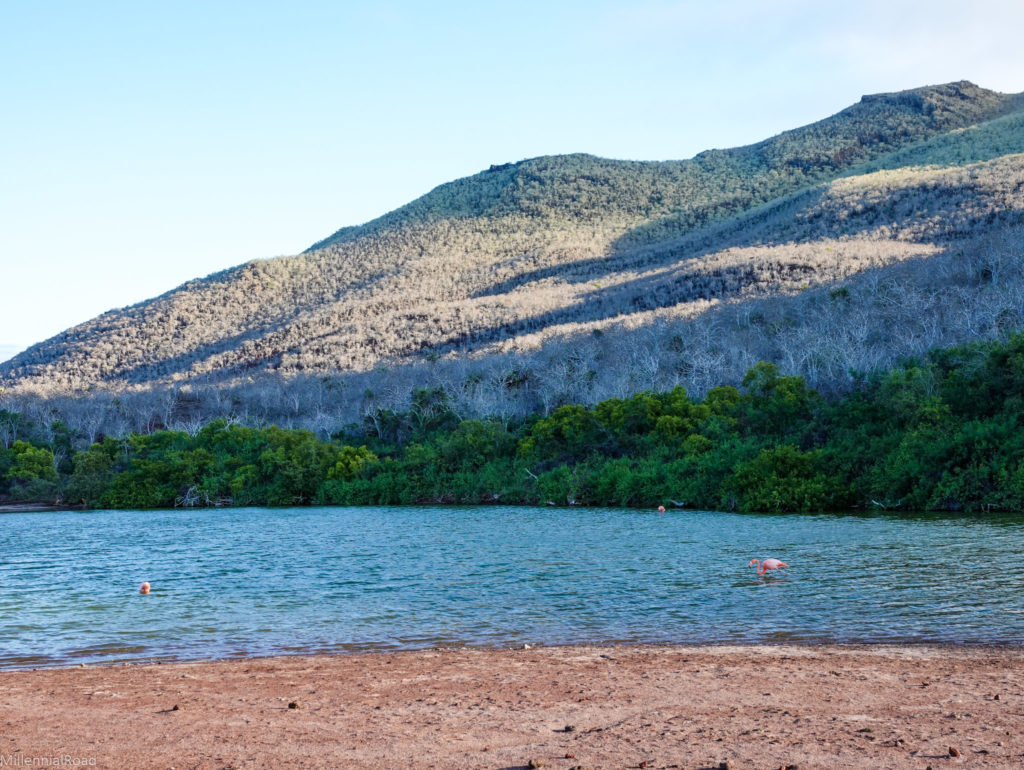
After nearly two weeks exploring the Galápagos Islands, you would think we had seen most of what there was to see at this point. Yet, we continued to have new and exciting experiences during the day we spent exploring Santiago Island and Rábida Island.
Santiago Island
The combination of epic views and diverse wildlife made James Bay one of my favorite places to hike in the Galápagos Islands.
Santiago Island boasts a distinctive terrain in comparison to other islands. In one direction, black lava rocks mark the shoreline of the island, while dry, arid vegetation dominates the island’s center.
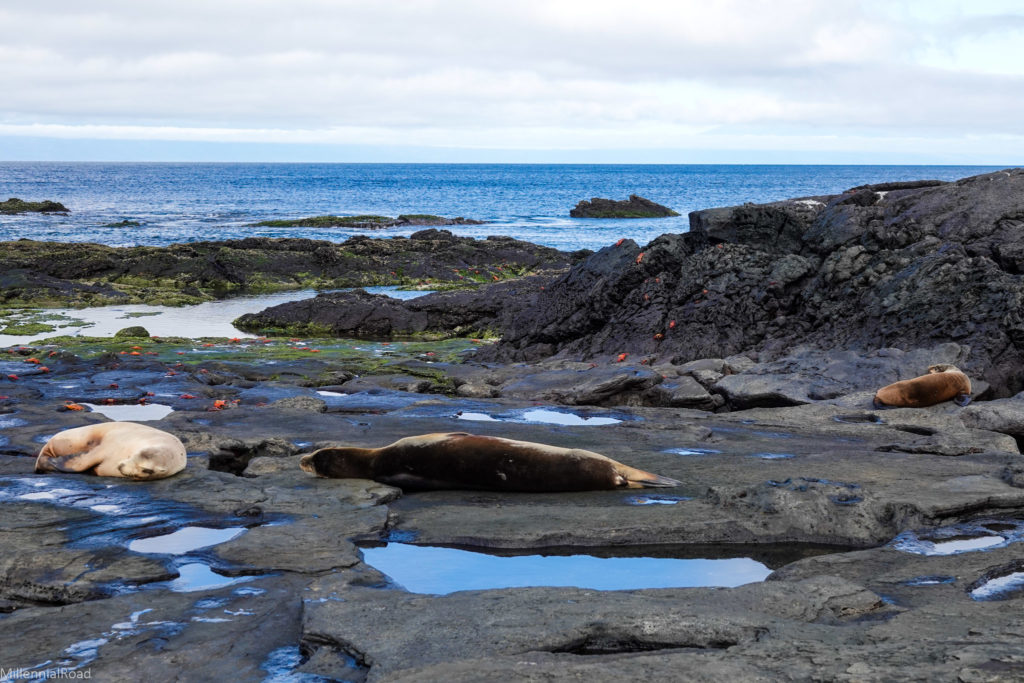
Along the edges of the water, countless Sally Lightfoot Crabs and sea lions were scattered across the lava rock. The contrast of their bright red shells sprinkled across the dark, barren surface made these small crustaceans impossible to miss.
The endpoint was the peak of the hike, in more ways than one. We came upon numerous fur seals, iguanas, sea turtles, and two juvenile hawks, all relaxing harmoniously alongside one another.
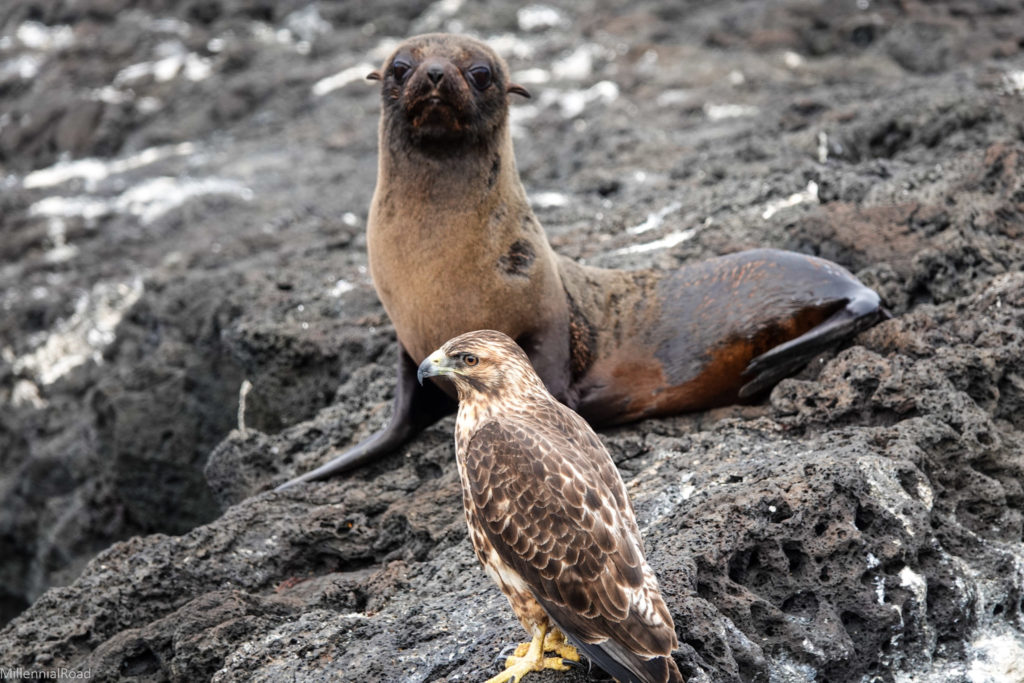
All of them were sitting on the edges of a rocky cliff overlooking the beautiful blue expanse of water in front of them.
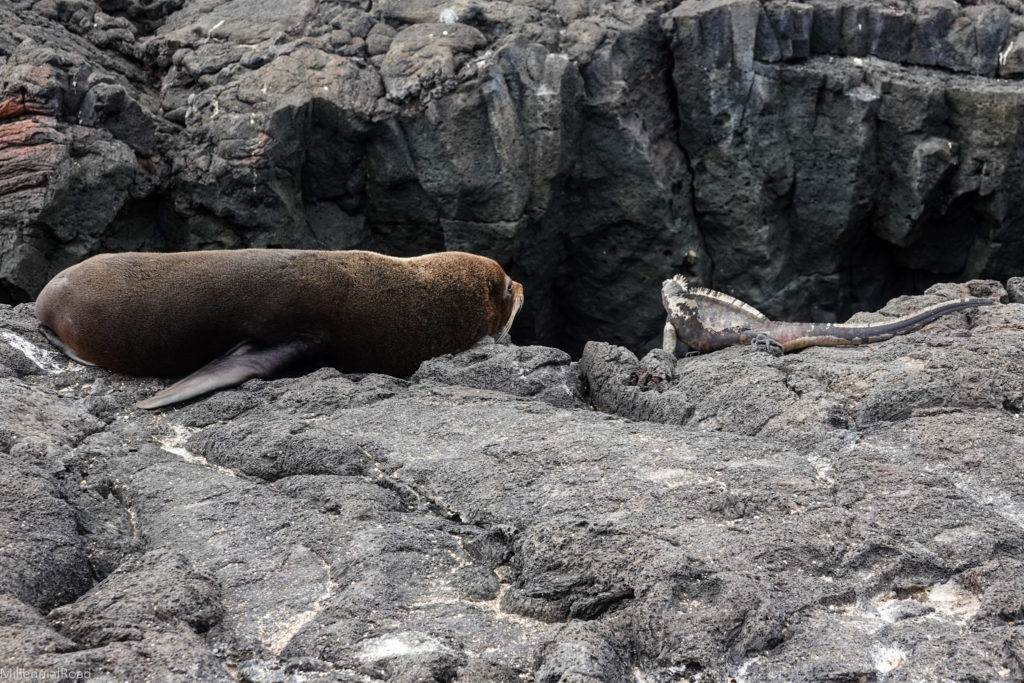
In one view, you could see three different varieties of incredible animals—fur seals, hawks, and iguanas—with this gorgeous backdrop. It was remarkably picturesque.
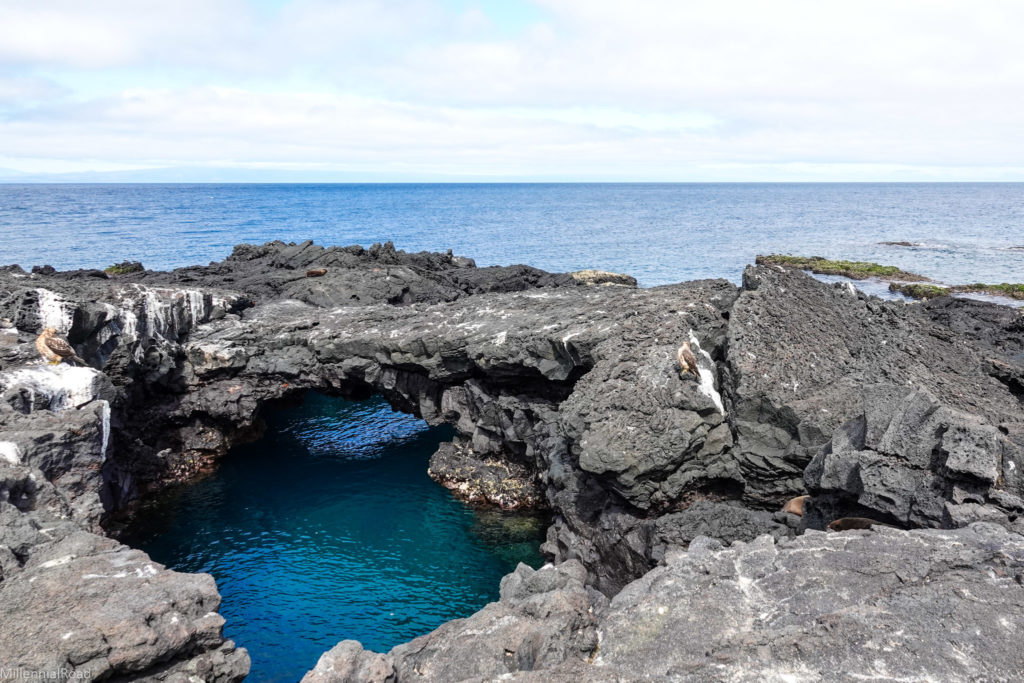
One hawk flew right near me to a spot that was probably less than six feet away from where I was standing. The juvenile hawks are quite beautiful, reminding you of their power and magnificence when they take flight.

I couldn’t help but laugh when looking at the fur seals. Fur seals look like chubby versions of the normal sea lions and, to some degree, almost resemble a teddy bear. They are adorable.
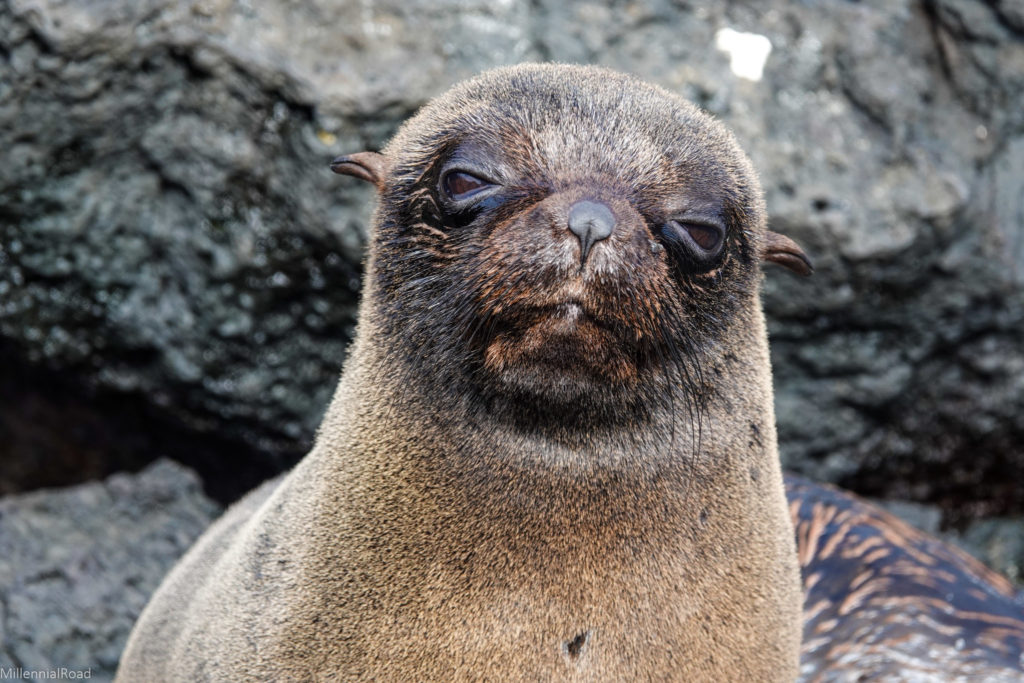
My heart melted as I spotted a juvenile fur seal peering up at me with its big curious eyes from the crevice in the rocks where it had wedged itself.
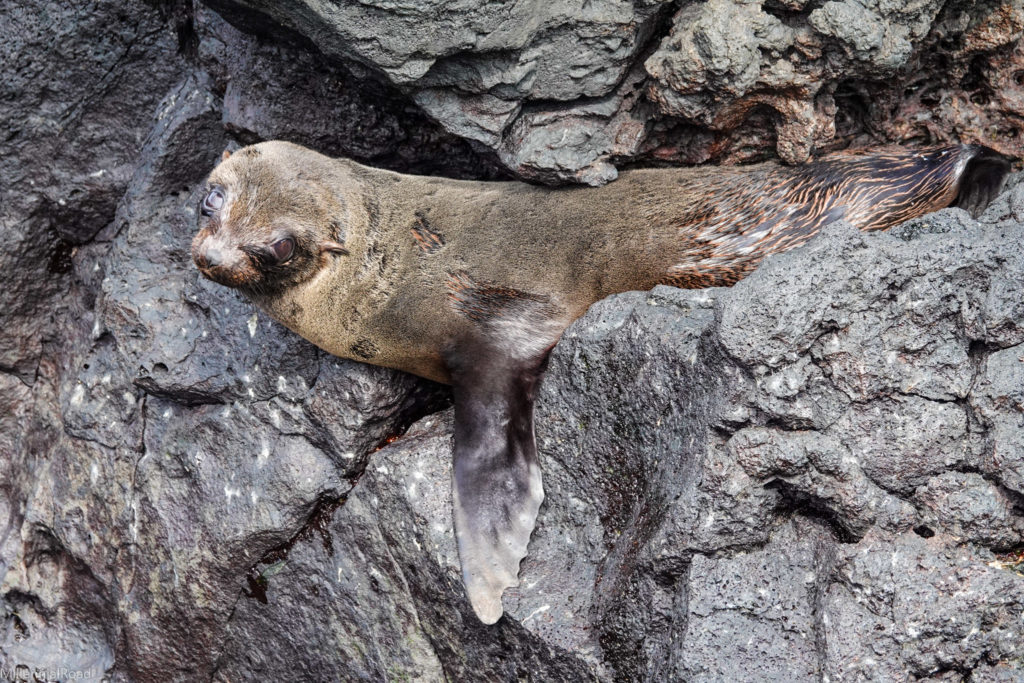
We still had another island to visit, but as far as I was concerned, you could already mark it down as a phenomenal day.
Rábida Island
After a short trip to Rábida Island, our next excursion for the day was snorkeling. It speaks volumes for the Galápagos Islands that this was one of the less eventful snorkels of the trip. And let me be clear—this snorkel was spectacular by any measure.
When we first entered the water, I noticed that there were so many starfish it was impossible to count. Many of these starfish were huge, and the range of colorfulness among them was extraordinary.
We got to snorkel with a fur seal for the first time. It was such a different experience than snorkeling with the other sea lions.
This fur seal was not playful in any sense of the term. It just lazily floated around while spinning in circles like a rotisserie. It was so chubby and cute.
Before I knew it, I was spinning in circles alongside this sea lion, just enjoying the moment—nothing to see here, just hanging out with a fur seal.
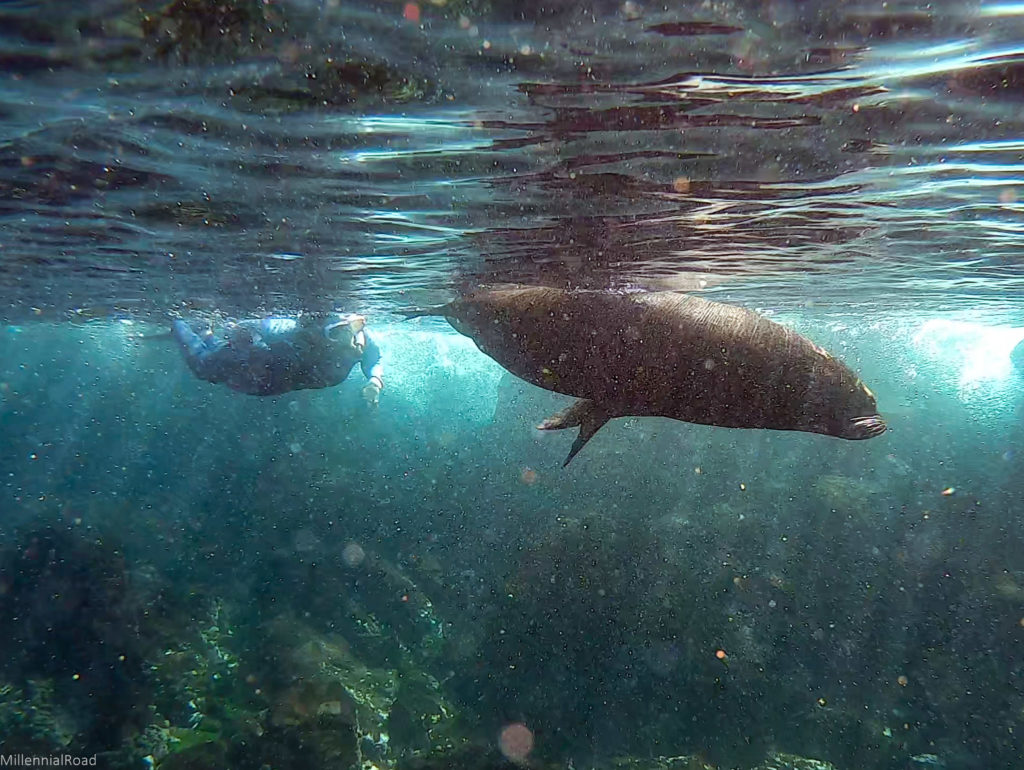
As we swam with several sea turtles, countless fish, and a large grey stingray, the snorkel increasingly became more and more exciting. I was mesmerized as I watched the stingray glide over this skinny, striped starfish.
One sea turtle we came upon was gnawing on algae on the ocean floor. This turtle showed a complete lack of fear from our presence, allowing us to swim in close proximity as he ate.
As we floated and watched in amazement, we could actually see him opening his mouth and sliding it from side to side to chew. I have no idea why watching wild animals eat is so fascinating, but it never ceases to amaze me.
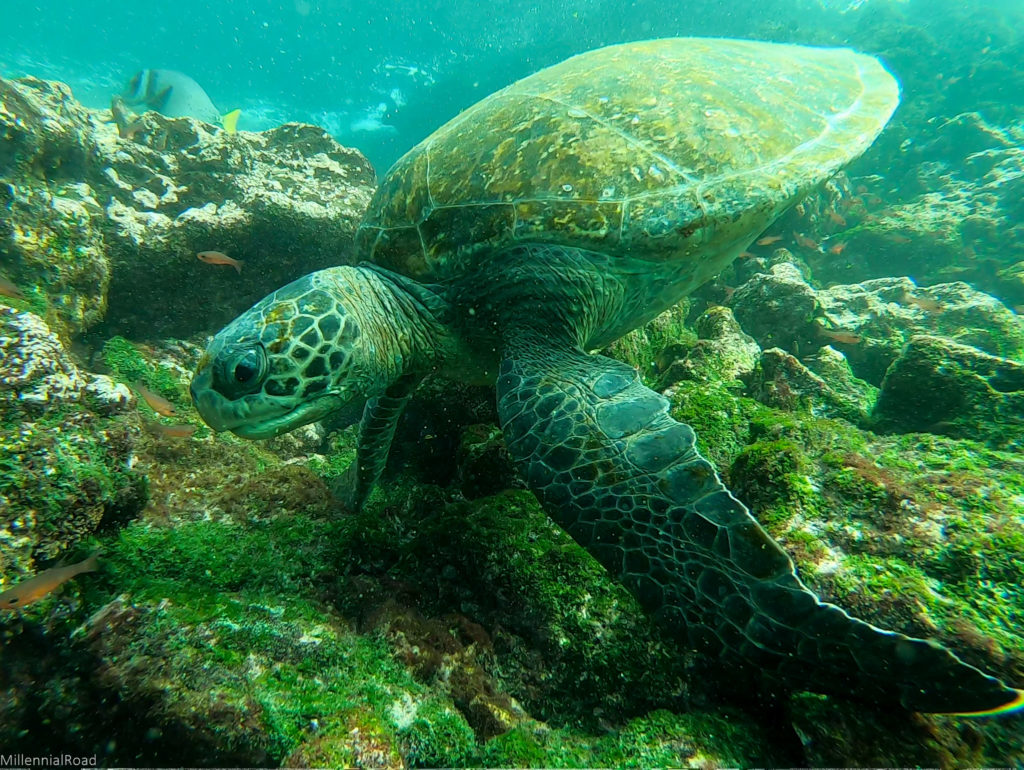
Right as we were about to get out of the water, we spotted a whitetip reef shark swimming below us. As we swam alongside this shark for a while, I couldn’t help but note how natural swimming near sharks was beginning to become.
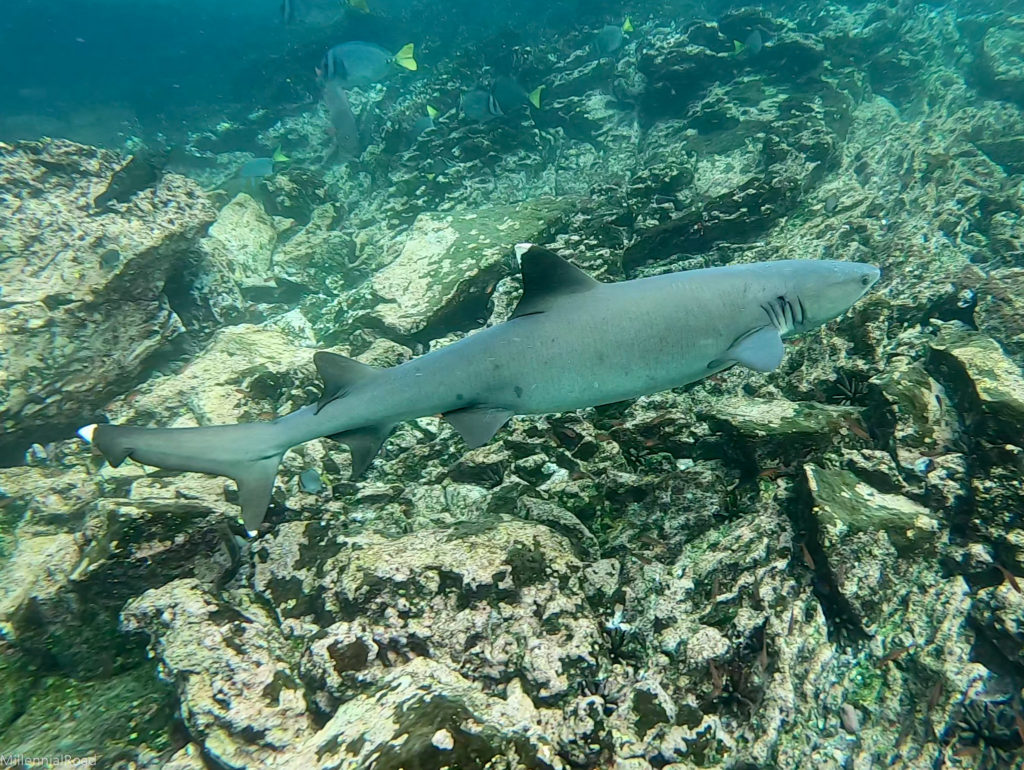
We did a second hike in the afternoon, starting at the Red Beach on Rábida Island. To put it plainly, this island is spectacular looking. The red sand and rocks next to the green brush and deep blue water create an undeniably striking contrast.
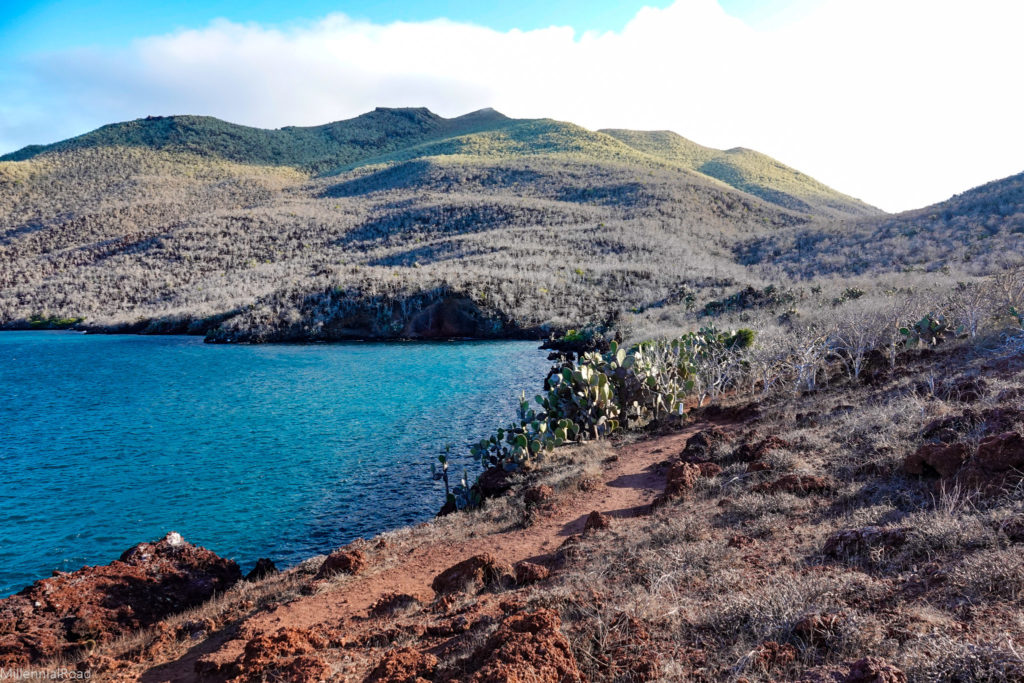
The island is covered in cactus plants, making for an even more picturesque view featuring these green desert plants on the red rocks with the expansive, blue ocean backdrop.
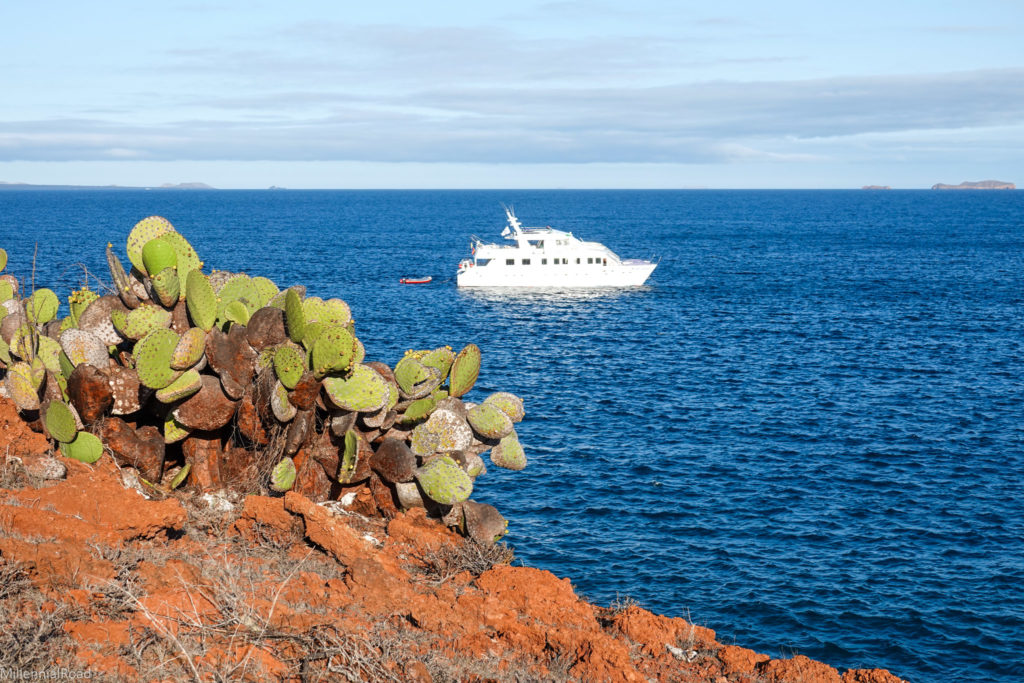
As we explored the island, we saw two groups of mockingbirds seemingly competing with one another for space. Further along the trail, a mother mockingbird was feeding her young.
Three bright, elegant flamingos enjoyed the safety of a lagoon that we came to at the end of the hike. Despite this being the fourth time we had seen flamingos since we arrived in the Galápagos, I still found them just as dazzling to watch this time as the first time we saw them.
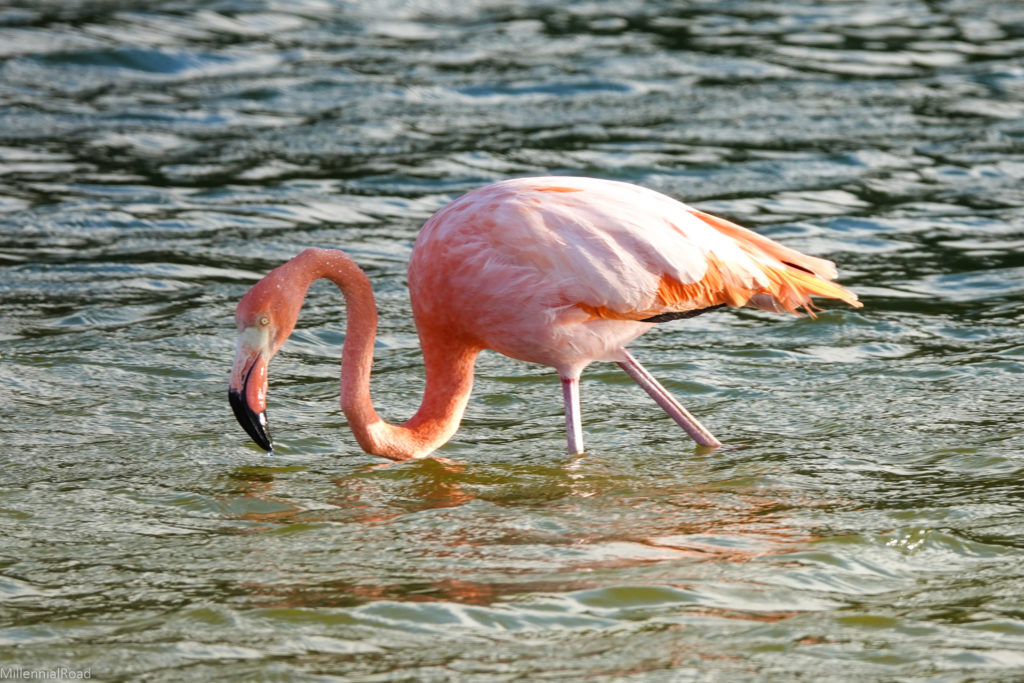
It was yet another unforgettable day in the Galápagos filled with adventure and joy.
For more exciting adventures, continue reading about the grand finale of our 15-day cruise around the Galápagos Islands.
If you missed it, go back and read about our encounters with marine iguanas on Fernandina Island.

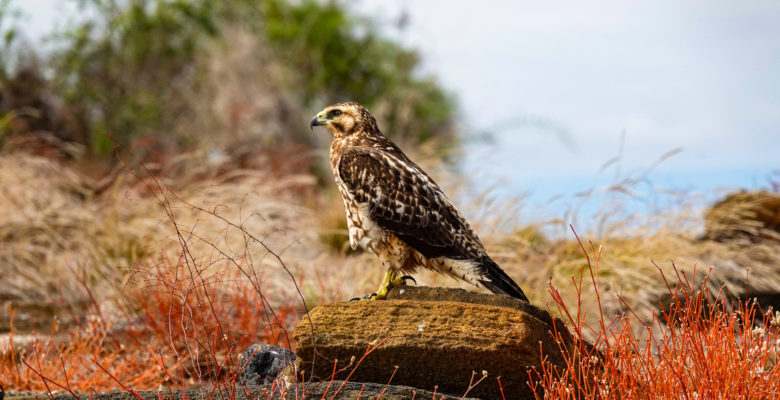
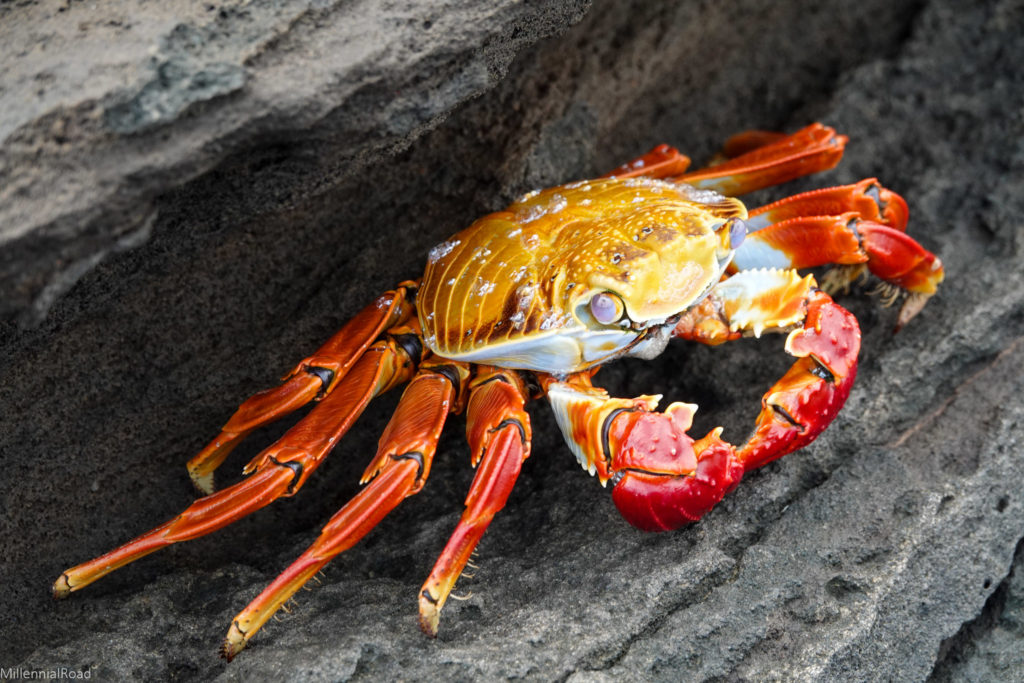
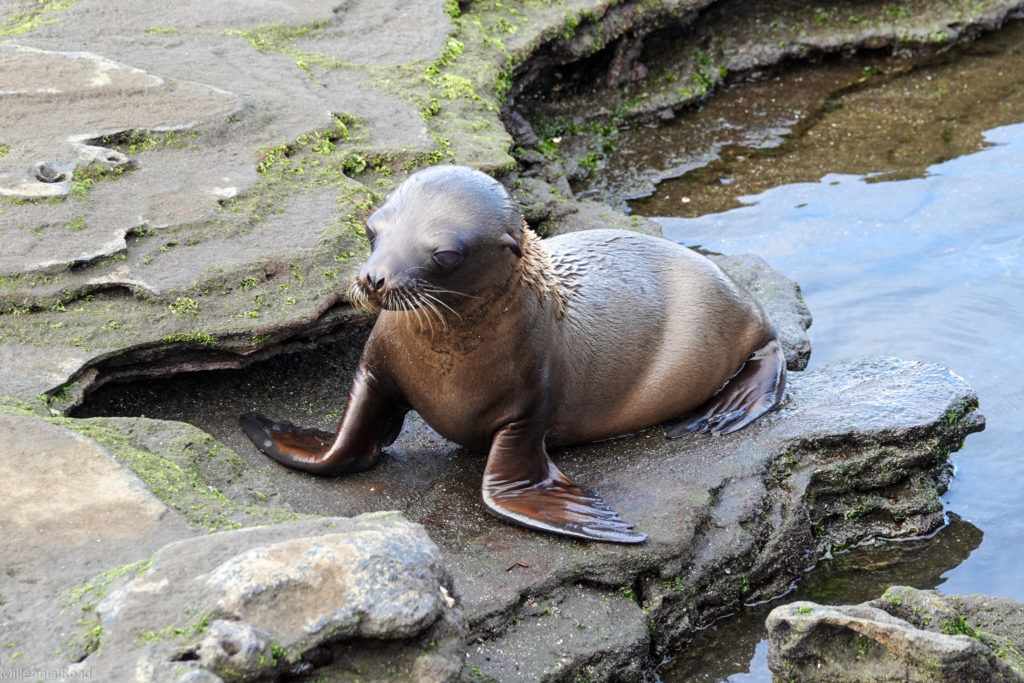
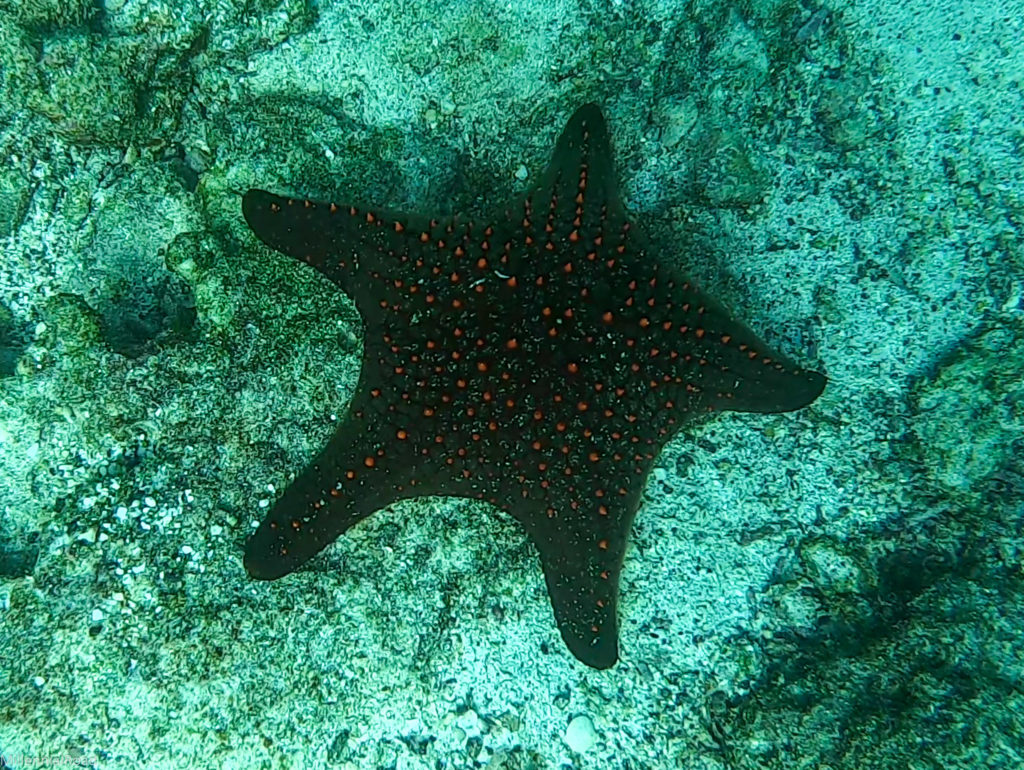
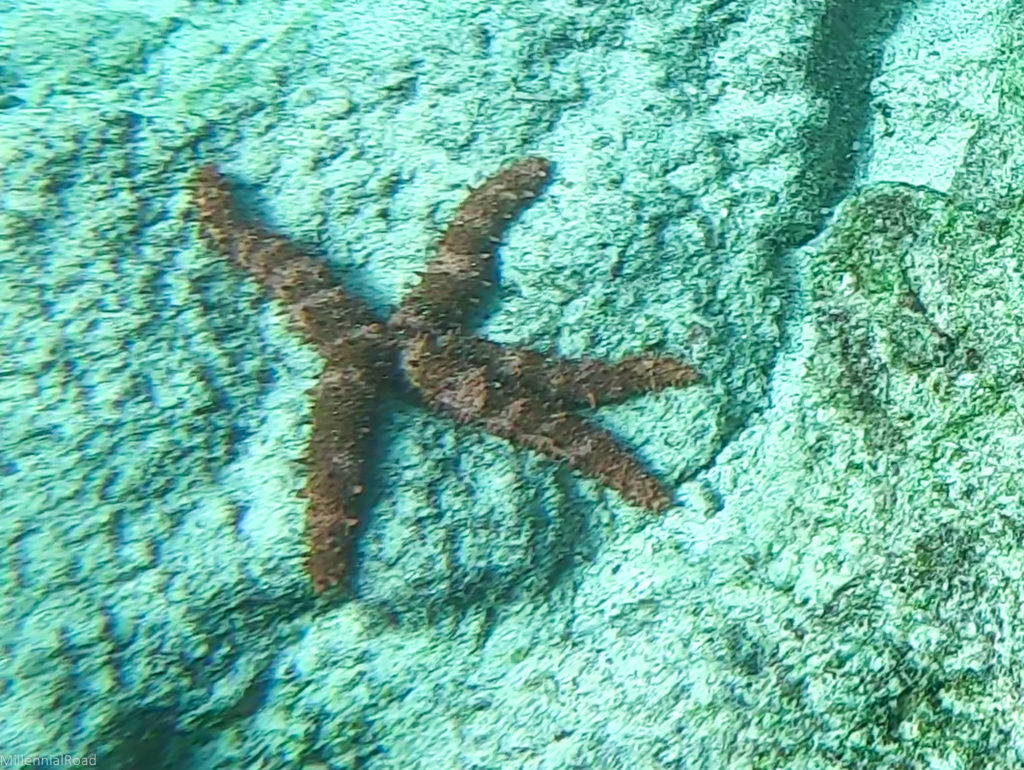
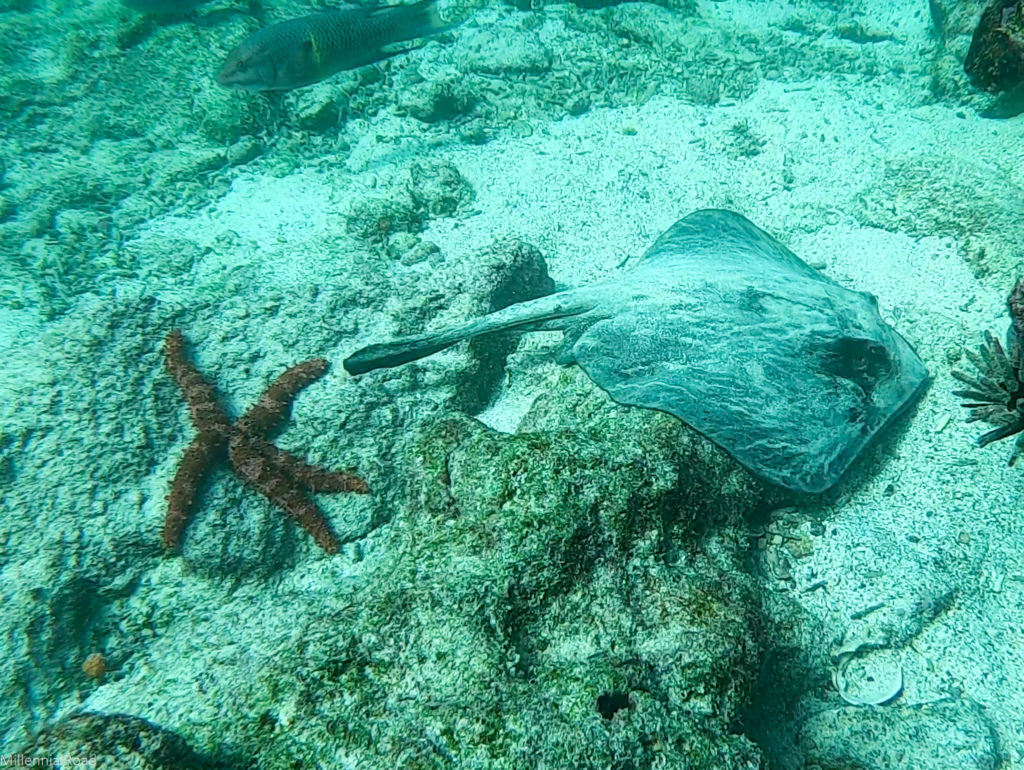
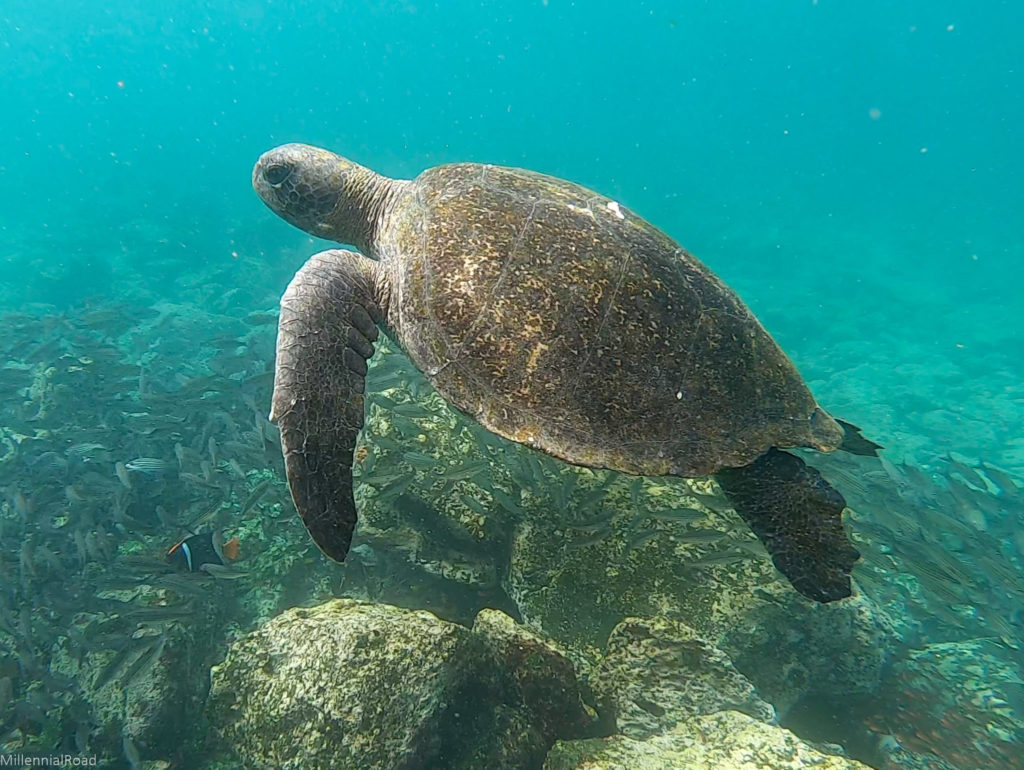
Leave a Reply